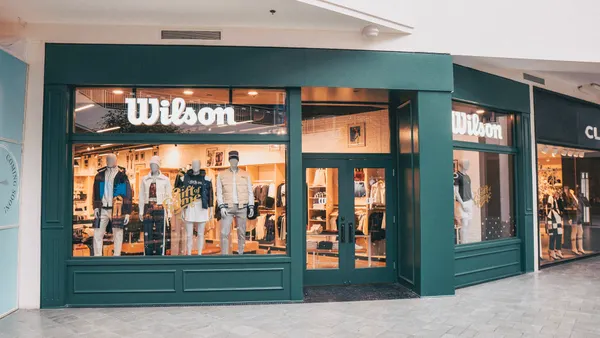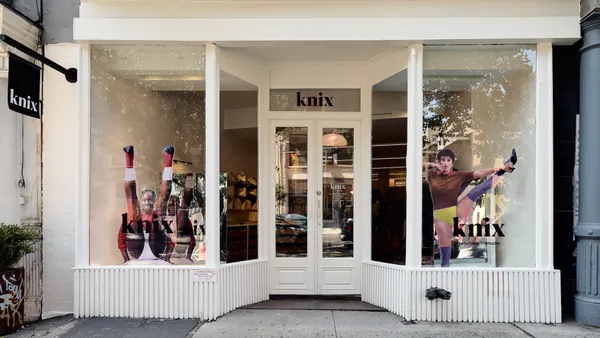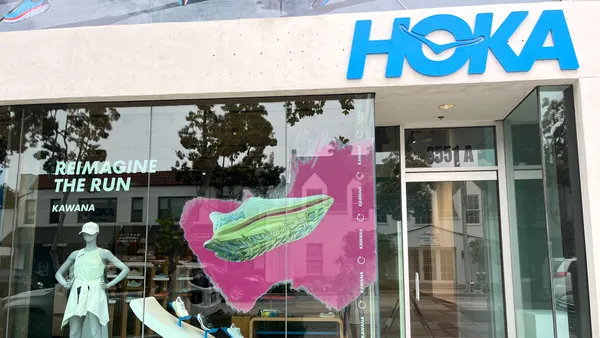Dive Brief:
-
Google is expanding its holiday-time pop-up effort this year by featuring goods you can buy on the spot, at locations in New York (110 Fifth Avenue, open 10 a.m. to 8 p.m. daily), and Los Angeles (8552 Melrose Avenue in West Hollywood, with the same hours) that open Oct. 19, Engadget reports.
-
The company is pushing its new Pixel 2, Pixel 2 XL smartphones and its Google Home Mini, which features a voice assistant in a fierce battle for market share with Amazon’s Alexa.
-
Last year, the company’s "Made by Google" pop-up shops similarly featured Google’s hardware but only offered online orders.
Dive Insight:
Devices — and the interactive voice assistants housed within them — from Apple, Amazon and Google are integral to these companies long-term strategies given how they invite and keep customers active within the ecosystems to create a virtuous cycle of loyalty and purchase. Physical store locations are especially key to electronics sales like these because customers want the opportunity to see and try devices, which even at comparatively reasonable prices often carry higher price tags than most undifferentiated merchandise.
Pop-up shops can be seen as incubators of sorts, allowing brands to try out locations, products or marketing campaigns before pulling the lever on a final idea — an opportunity to "fail fast, and succeed faster," Michael D. Decker, vice president of marketing strategy at boutique marketing agency Medallion Retail, told Retail Dive last year. "You don’t have to worry about groupthink and quantitative focus groups," Decker said. "If you put the concept up to test out on the street and you’re selling like crazy, you can probably assume that people are going to want your product."
Google hasn't opened more permanent sales locations, in contrast to its rivals in this space. Apple, of course, has a formidable global brick-and-mortar footprint, while Amazon, through its bookstores, the acquisition of Whole Foods a partnership with Kohl's and the move into Seattle's Macy's store, is swiftly delving deeper into brick and mortar.
But Google is forging major voice partnerships with Walmart, Target, The Home Depot and others ahead of the holidays, stoking competition in the space. Some 35.6 million Americans will use a voice-activated assistant device at least once a month this year, according to research released in May from eMarketer. If that forecast proves correct, it would be a 129% jump in voice engagement with virtual assistants over last year.
"You’re definitely going to be seeing [some] jockeying for position. What you’re seeing right now [is] the big players to some extent opening up their systems, and that third-party will simply lead to more adoption," Maya Mikhailov, co-founder and CMO of GPShopper told Retail Dive. "When you have a closed ecosystem — that not everyone can play on — that inevitably leads to less adoption unless that party already has tremendous momentum. I think there’s a reason you see so much excitement around the connected home. For retailers it has to be a very interesting place to play in because as a retailer, you have to be everywhere."
The battle is just getting started and will be fueled by the upcoming holiday season, according to Luke Starbuck, vice president of marketing at customer care automation platform Linc, who notes that the perception of voice assistance as futuristic has now become a reality. A huge majority (87%) of retailers expect to be using AI for customer service and engagement within the next 24 months, while 41% are using it or experimenting with it already, according to Linc's research.
This story is part of our ongoing coverage of the 2017 holiday shopping season. You can browse our holiday page and sign up for our holiday newsletter for more stories.













